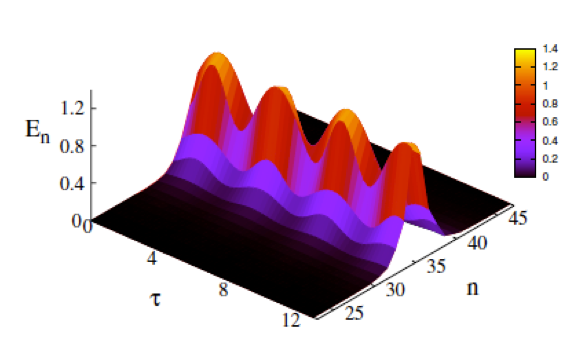Parity-time (PT) symmetric systems constitute a class of artificial (“synthetic”) materials appropriately engineered to exhibit properties not found in natural materials. Relevant examples of PT-symmetric systems range from quantum field theories and mathematical physics to atomic, solid state, optics, and optical lattices. The ideas and notions of PT-symmetric systems have originated from the extension of ordinary Quantum Mechanics to PT-symmetric (i.e., non-Hermitian) Hamiltonians that have been studied for many years. Metamaterials is another recent paradigm of artificial media in the forefront of research that exhibit several extraordinary properties but in many cases suffer from high losses. However, building metamaterials with PT-symmetry, relying on gain and loss, may provide a way out and also result in altogether new functionalities and electromagnetic characteristics.
N. Lazarides and G. Tsironis introduced theoretically a discrete model for metamaterials where loss may be matched with an equal amount of gain-an extended system of this type would preserve parity-time (PT) symmetry. The gain/loss features are introduced through tunnel diodes which feature negative differential resistance when they operate in an appropriate regime. The presence of these elements, in addition to providing gain also introduces nonlinearity in the metamaterial. Discreteness and nonlinearity favours the spontaneous generation of long-lived, intrinsic localized modes or discrete breathers in different parts of metamaterial. PT-metamaterials and metasurfaces may operate in microwave frequencies and higher, suppress losses and provide tunability through the natural appearance of a transition to a PT-broken phase.

Reference: "Gain-Driven Discrete Breathers in PT-Symmetric Nonlinear Metamaterials", by N. Lazarides and G. P. Tsironis, Phys. Rev. Lett. 110, 053901 (2013).




